1. The front of this rule is fairly standard with a basic range of scales. What is perhaps slightly surprising is the relatively large number of scales fitted into quite a compact rule. This is done in part by having the sine (S) and tan (T) scales side-by-side.
2. Where this rule gets (very) interesting is on the back. The same scales as on the front are repeated on the back with the addition of an asterisk to the name and one major difference, rather than covering the one decade of logarithms of the C and D scales the C* and D* cover 20 decades, from 10-10 to 1010. Similarly the A* and B* scales cover 40 decades, 10-20 to 1020 and the K* scale covers 60 decades, from 10-30 to 1030. The purpose of this is that rather than having to estimate the position of the decimal point, with a risk of error particularly for an inexperienced user, a preliminary calculation can be carried out using these scales. It is possible to use these scales to an accuracy of about 2 significant figures. The calculation is repeated on the scales on the front of the rule to get the usual 3 figure accuracy.
3. The scales are fairly easy to use with a little practice however the fact that the 1.0 is in the middle of the scale takes a bit of getting used to.
4. The inclusion on A*, B* and K* scales also means that there is no problem in working out the decimal points of roots - also a problem for some beginners.
5. Not only are the straightforward logarithmic scales reproduced on the back of the rule but the trig scales are as well. I assume this was mainly to enable calculations for be carried with the trig scales and other scales as there is usually little difficulty in knowing where the decimal point is with direct use of the trig scales. One interesting feature is that the trig scales on the back cover a much wider range than those on the front down to 0.05° for sin and tan and up to 89° for tan.
6. In one sense I am surprised that so few slide rule makers offered this type of rule - it certainly removes one of the major headaches for new users. On the other had the fact that every calculation has to be done twice imposes a continuing extra work load which would not be necessary when other methods of tracking the decimal point had become familiar. Another drawback was that every number had to be converted to scientific notation.

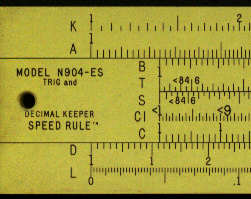
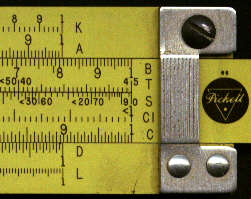

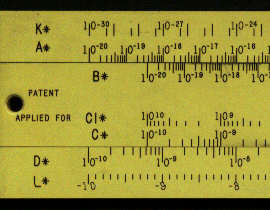
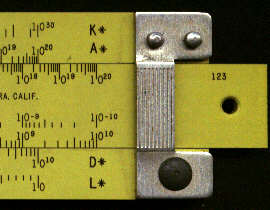
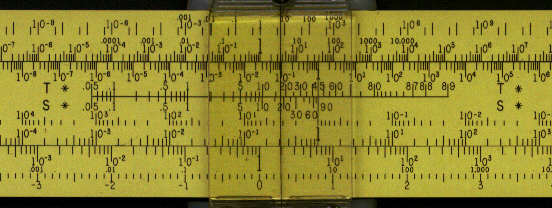
K*, A* [B*, T*, S*, CI*,C*] D*,L*